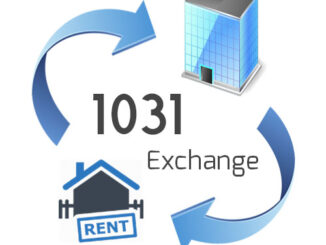
Investing in real estate offers numerous opportunities for wealth accumulation and financial growth. However, the tax implications associated with real estate transactions can significantly impact an investor’s bottom line. Fortunately, the 1031 exchange provides a powerful strategy for tax-deferred investing, allowing investors to maximize their returns and preserve their capital. In this article, we will explore the concept of tax-deferred investing through the lens of the
1031 exchange, highlighting its benefits and exploring how it can unlock the full potential of real estate investments.
The 1031 exchange, also known as a like-kind exchange, is a provision in the U.S. tax code that enables investors to defer capital gains taxes when exchanging one investment property for another of equal or greater value. By utilizing this tax-deferred strategy, investors can defer the payment of capital gains taxes, allowing their investment capital to continue growing.
One of the key benefits of the 1031 exchange is the ability to preserve and leverage capital. When a property is sold, capital gains taxes are typically due on the profit earned from the sale. However, with a 1031 exchange, investors can defer these taxes and reinvest the full proceeds into another property. By keeping more capital working in the investment, investors can potentially acquire properties with higher income potential or in more desirable locations, leading to increased cash flow and long-term appreciation.
Furthermore, the 1031 exchange provides flexibility and opportunities for portfolio diversification. Investors are not limited to exchanging properties of the same type or in the same location. Instead, they can explore different asset classes or geographic areas, allowing for strategic portfolio adjustments and risk mitigation. This flexibility enables investors to adapt their portfolios to changing market conditions and capitalize on emerging investment opportunities.
It’s important to note that while the 1031 exchange allows for tax deferral, the taxes are not eliminated. They are postponed until a future sale without a 1031 exchange. However, this deferral can be highly advantageous, as it provides investors with increased cash flow, increased purchasing power, and the potential for greater overall returns.
To ensure a successful 1031 exchange, investors must adhere to certain requirements. First, the properties involved in the exchange must be held for investment or business purposes; personal-use properties do not qualify. Additionally, there are strict timelines that must be followed. Investors must identify potential replacement properties within 45 days of selling their relinquished property and close on the acquisition of the replacement property within 180 days. Working with qualified intermediaries and real estate professionals experienced in 1031 exchanges is crucial to navigating these requirements and ensuring compliance.
In conclusion, tax-deferred investing through the 1031 exchange provides real estate investors with a powerful tool to maximize their returns and preserve their capital. By deferring capital gains taxes, investors can keep their investment capital working for them and potentially acquire properties with higher income potential or in more desirable locations. The flexibility and diversification opportunities offered by the 1031 exchange further enhance the benefits of tax-deferred investing. However, it’s important for investors to understand the requirements, timelines, and complexities associated with the 1031 exchange. Seeking advice from tax professionals and experienced real estate advisors can help investors navigate the process and unlock the full potential of tax-deferred investing in real estate.
#TaxDeferredInvesting #1031ExchangeExplained #MaximizingReturns #LikeKindProperties #WealthBuildingStrategies



